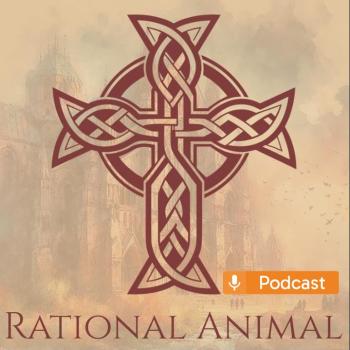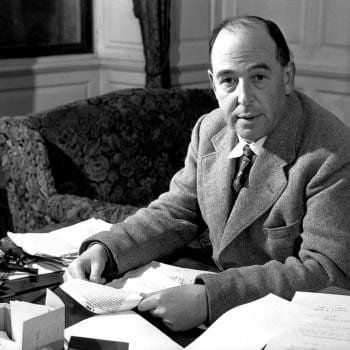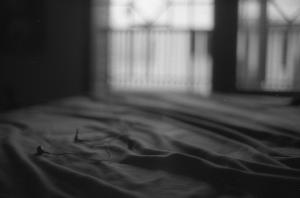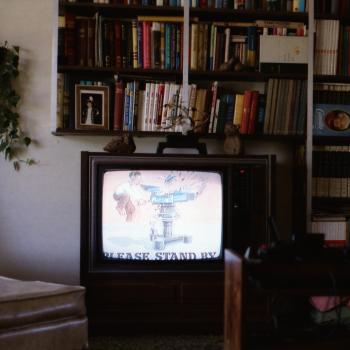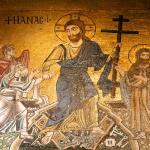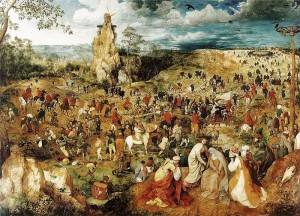 In Breughel’s panoramic painting, “The Procession to Calvary,” the fallen Savior, collapsed under the cross beam, is mostly ignored. Although he’s right in the center of things, nobody pays him too much mind. Instead, the fantastic landscape that surrounds him churns with a thousand wheels of activity, each cog connected to the other, spinning upon its fellows like the clockwork mill that sits atop a monument of stone, high above.
In Breughel’s panoramic painting, “The Procession to Calvary,” the fallen Savior, collapsed under the cross beam, is mostly ignored. Although he’s right in the center of things, nobody pays him too much mind. Instead, the fantastic landscape that surrounds him churns with a thousand wheels of activity, each cog connected to the other, spinning upon its fellows like the clockwork mill that sits atop a monument of stone, high above.
Breughel seems to have loved this approach, philosopher artist that he was. It made a lifetime of statements for him: E.g., “Yes, a winged man is falling from the heavens over there to my right, but I’ve got forty acres to plow and my feet are killing me.” Historic things can happen throughout a day, implies Brueghel; still, the pot boils, the baby cries, and the cow bellows to be milked; our attentions go elsewhere. The eschaton might begin its fateful crack right next door, but chances are we’ll be tying our shoelaces when it does. One of Breughel’s modern descendants is the Englishman Stanley Spencer, who used Cookham village to stand in for the world, going about its hum-drum business as its creator ambles by on the road to reality’s inversion.
While even children can enjoy the great Fleming, since Breughel’s canvases are like Rube Goldberg contraptions, surprising in their humor and complexity, great thinkers have considered his works masterpieces of contemplation. Precise as his technical detail may be, it is surpassed by how much thought he puts into his compositions. His works stand alone, immediately recognizable notwithstanding their influence on the later surrealists and symbolists, who are perhaps better known now.
There can be no vaster appreciation for what Brueghel accomplished in “The Procession” than Polish director Lech Majewski’s film, The Mill and the Cross. Inspired by art critic Michael Francis Gibson’s book of the same title, Majewski’s work has been shown in museums, and rightly so, for it belongs in a museum itself. It is not so much a movie as it is a painted film.
Under Majewski’s direction, Brueghel’s canvas is infused and lifted into the world of movement and time—but exists in a mode still uncannily faithful to both the plastic arts and to the theatrical. The painting is resurrected like a lovely, expectation-raising home screen of an interactive computer program (the film lays to rest any doubt that computer design is an artistic medium). There is not a shot that is not also a portrait. Honoring Brueghel’s genius, Majewski displays his own in a work that defies genre—not just film, but art itself.
Like so many great Polish filmmakers—Kieślowski and Zanussi, to name two—he is above the foolishness of modern secular separatism. Whatever these men personally believe, they know what the civilized world owes to Christianity. Consequently, their contributions draw deeply upon that horde to make serious humanistic statements.
To that end, The Mill and the Cross isn’t so much a movie as a philosophical discourse on art, religion, and man’s curse (distorting any great idea into an instrument of torture: in Breughel’s time, the Spaniard’s religious persecution of the Flemish). The director is not so much interested in narrative—there is very little in the film—but in explaining the picture’s meaning. So the audience is brought inside it, as Brueghel himself (Rutger Hauer) describes the process to the donor who has commissioned the piece (Michael York).
“I will work like the spider,” he says, “anchoring the viewer.” That he does, spinning out from the figure of the fallen Christ to the large, rude world that blunders about him even as he transforms it. The analogy is apt, as the spider’s web is in the shape of a Catherine’s Wheel, another central feature of torture that echoes in the small Calvaries standing about the countryside.
The mill, high above, is the process of life, he explains. It resembles a church, with its sail-like arms forming the great cross. The miller, barely visible, is God, producing the bread of life. The left side of the canvas is filled with other positive symbols—the circular city—a tall green tree—the clear sky. But as we move to the right, the skies cloud, and the people form circles of death, swarming like flies to the distant ring of Golgotha.
The only other major character is the Virgin Mary (Charlotte Rampling). She is mystified by the ordinariness of the day, which is painfully ominous. She narrates that those who had welcomed her son, glory-born and glory-fated, or so it had always seemed, are now calling for his death. Still, the day is so slow, the landscape so deliberate and honest, that it reassures her; nothing is going to happen, she repeats.
At one point, the donor complains that if time could be stopped, we could wrestle down the injustice and cruelty, speak its name to its face, and break its spell. Brueghel implies with a look that he can do all of this—by means of the painting; and so it happens, majestically.
But Brueghel doesn’t suggest that art eliminates tragedy; after all, this painting has hung for five centuries, viewed by millions of people. The film even ends by pulling back from the landscape of the painting to place it within the landscape of the museum. Despite all the showings and lectures about it, its lesson is never learned.
Or perhaps a different one is, implies Majewski: the ruthlessness of routine carries on even as evil’s name is spoken. Life’s grinding, plodding bigness—its ordinariness—keeps us from noticing where we are or what goes on around us.
It seems there’s always a reveille of sorts; a clarion. And sometimes we stop. Our eyes fix, we hear it, and we notice the context, gravity, and law of what we’re doing. Sometimes. But mostly that’s not so; mostly we just ignore it, as the Savior passes by.
A.G. Harmon teaches Shakespeare, Law and Literature, Jurisprudence, and Writing at The Catholic University of America in Washington, D.C. His novel, A House All Stilled, won the 2001 Peter Taylor Prize for the Novel.
Art above: Pieter Brueghel, The Procession to Calvary, 1564.



